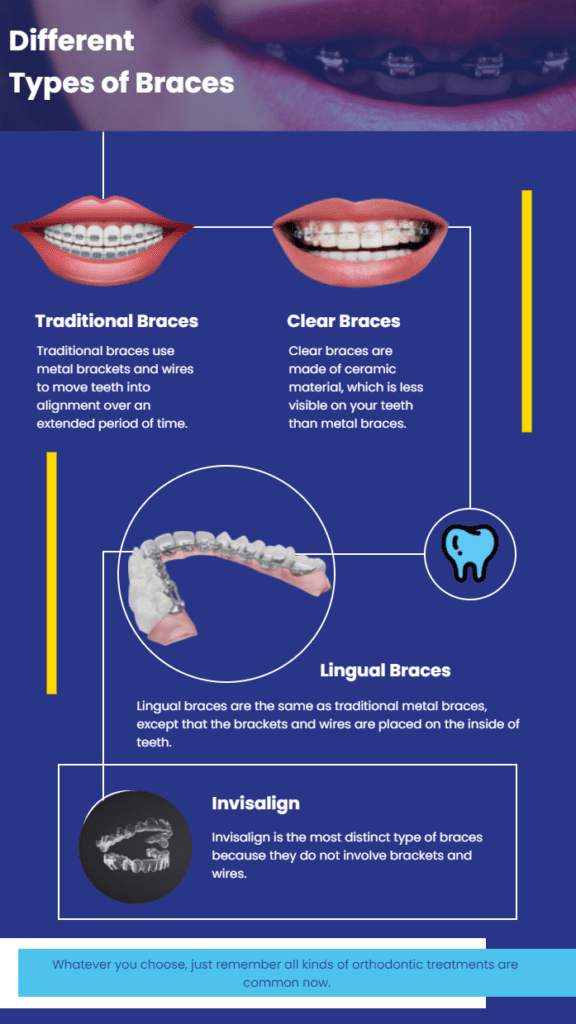Comprehensive Overview to Orthodontics Procedures for Fixing Dental Imbalances
Understanding the complexities of each procedure, including their mechanisms, benefits, and potential downsides, is crucial in making informed decisions concerning one's orthodontic therapy. As we navigate through the comprehensive overview to orthodontic treatments for correcting oral imbalances, the elaborate details of each approach will certainly unravel, dropping light on the path towards a functional and harmonious oral placement.
Orthodontic Procedures Introduction

Along with standard braces and clear aligners, orthodontists might likewise advise other treatments like headgear, palatal expanders, or retainers to attend to certain positioning issues (aligners). These treatments are tailored to every individual's distinct demands and may include a mix of treatments to accomplish the wanted outcomes. Regular modifications and surveillance are essential components of orthodontic therapy to guarantee progress is on track and to make any kind of necessary adjustments along the road. By undertaking orthodontic procedures, people can not only accomplish a straighter grin yet also improve their general dental health and feature.
Standard Dental Braces: Just How They Function
When thinking about orthodontic therapies for dental misalignments, typical dental braces stand out as a time-tested technique for correcting teeth positioning. Typical braces consist of braces, wires, and bands that work with each other to apply continual pressure on the teeth, slowly relocating them into the preferred placement.
One key element of just how traditional braces work is the process of bone improvement. As stress is put on the teeth through the braces, the bone bordering the teeth is improved to support the brand-new tooth placements. This remodeling is necessary for the lasting security of the corrected alignment. People will need routine modifications at the orthodontist's workplace to make certain the dental braces remain to use the right stress for reliable teeth movement.
Unnoticeable Aligners: Cons and pros
Invisible aligners offer a discreet and practical alternative to traditional dental braces for dealing with oral misalignments. These clear, personalized trays are basically unseen when worn, making them an appealing option for people looking for a much more cosmetically pleasing orthodontic therapy. One of the primary benefits of undetectable aligners is their removability, enabling simpler maintenance of oral health contrasted to typical dental braces. Clients can eliminate the aligners before consuming or cleaning their teeth, reducing the threat of helpful hints food getting embeded the device and simplifying the cleaning process.

Surgical Orthodontic Options
Surgical interventions in orthodontics existing sensible options for dealing with complicated oral imbalances that may not be successfully solved via standard orthodontic treatments. While conventional braces and unnoticeable aligners can correct several orthodontic concerns, certain cases require medical treatment to accomplish optimal results. Surgical orthodontic alternatives are commonly recommended for severe malocclusions, substantial jaw inconsistencies, and cases where the underlying bone structure requires adjustment to achieve correct alignment.
One common medical orthodontic procedure is orthognathic surgery, which entails repositioning the jaws to correct useful concerns such as problem chewing or talking. This surgical treatment is frequently performed in cooperation with an orthodontist that helps straighten the teeth before and after the procedure. Surgical orthodontics might also entail procedures to reveal impacted teeth, eliminate excess periodontal tissue, or improve the jawbone to produce an extra harmonious face profile.
Prior to considering medical orthodontic options, individuals undergo a thorough assessment to establish the necessity and possible benefits of such treatments. orthodontics. While surgical treatment might seem overwhelming, it can substantially improve both the function and looks of the smile in instances where traditional orthodontic therapies fall short
Retainers and Post-Treatment Care

Failing to abide with post-treatment treatment guidelines can result in regression, where the teeth slowly move back towards their original placements. Regular retainer wear, excellent dental hygiene, and regular dental exams are vital for preserving the results achieved via orthodontic surgical procedure and making sure the long-lasting stability of the corrected oral alignment.
Conclusion
In final thought, orthodontic procedures use various choices for correcting dental imbalances. Surgical orthodontic options are readily available for more extreme misalignments. Generally, orthodontic treatments can efficiently boost oral health and visual look.
As we navigate with the comprehensive guide to orthodontic treatments for correcting dental misalignments, the detailed details of each technique will certainly unravel, shedding light on the path towards a harmonious and check here functional oral alignment. - cumming invisalign
One of the most common orthodontic treatments is the usage of dental braces, which consist of steel brackets and cables that use mild stress to gradually shift teeth into the preferred placement.When thinking about orthodontic therapies for oral misalignments, conventional braces stand out as a tried and true approach for dealing with teeth placing. Additionally, unseen aligners might not be suitable for intricate orthodontic concerns that require more significant teeth movement, as they are generally suggested for mild to moderate cases. Retainers are customized orthodontic gadgets developed to hold teeth in their remedied settings after the completion of orthodontic treatment.